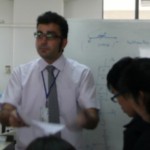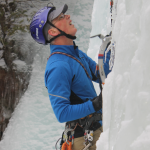- This topic has 19 replies, 3 voices, and was last updated 7 years, 11 months ago by
 sardar bahadori.
sardar bahadori.
-
AuthorPosts
-
-
March 31, 2016 at 4:14 am #34227
 sardar bahadoriParticipant
sardar bahadoriParticipantDear All,
I need to design Mach-Zehnder waveguid but there are some inconvenient problems to complete this design. Attached is the shape and size of this switch for half of it. If you are familiar with OPTI BPM please message me.
Your Sincerely
Attachments:
-
April 1, 2016 at 2:32 pm #34342
 SAHIL SINGHParticipant
SAHIL SINGHParticipantHi Sardar,
Can you please elaborate on the problems you are facing in design ? Try to explain so that we can be of an help..
Regards
Sahil Singh
-
April 2, 2016 at 9:40 am #34489
 sardar bahadoriParticipant
sardar bahadoriParticipantDear Dr. Sahil Singh,
Regarding this design I have problems as below:
1. Why should we use diffuse material for design Mach-Zehnder waveguide while in our laboratory its designed with PMMA and PDMS?(refractive index:1.42 for cladding and 1.48 for waveguide)
2. Can you tell me about input plan and measure is exist there! For 2D and 3D simulation please tell me as well. I need both 2D and 3D simulation relatively.
3. Please write for me your steps when you doing design.Your Sincerely,
Sardar Bahadori
Attachments:
-
-
April 5, 2016 at 4:41 pm #35761
 Steve DodsParticipant
Steve DodsParticipantYou don’t need to use diffused material or diffused waveguides when designing a Mach-Zehnder interferometer. Any kind of waveguide can be used, including channel waveguides made from PMMA.
-
April 6, 2016 at 12:09 am #35776
 sardar bahadoriParticipant
sardar bahadoriParticipantDear Mr.Steve Dods,
Thank you very much for your reply. Would you please answer the rest of my questions as below:
1. Does there any limitation for size of the optical waveguide? As in lesson 14 it mentioned” The whole switch device will be about 33 mm long and will not be more than 100 microns wide.” because the waveguide I want to design has 40mm length and 300 micros wide!(please check attachment.40mm*20mm*30microns)
2. Would you please tell me about adjustment for 2D and 3D isotropic simulation? like as” channel pro( in my design optical waveguide should be in depth of 18 microns and thickness of waveguide is 30 microns. B:Amount of mesh, BPM solver and boundary condition? C:Input plane?
3.How can i put electrodes like as attachment on this waveguide?
4. How can I able to see power ratio in unit of watt and intensity of output.Your Sincerely,
sardarAttachments:
-
-
April 7, 2016 at 10:11 am #36022
 Steve DodsParticipant
Steve DodsParticipantDear Sardar,
1) The only real limitations to the size of the simulation is the amount of RAM on your computer and how long you are willing to wait for the simulation to finish.
2A) 2D simulations aren’t used very much anymore. Computer speed and RAM have increased to make 3D simulations practical. 2B) The mesh size is found by convergence tests. Simulate with one mesh, double the mesh and simulate again. Confirm if the solutions are converging with mesh size. 2C) The settings of the input plane are given by what you want this simulation to be. This is unknown to me.
3) Electrodes are made from waveguides that have Electrode Material in them. See OptiBPM Tutorial “Lesson 10: Electro-Optic Modulator” for an example of how this is done.
4) The BP method is based on a linear theory. Therefore power and amplitude can be in arbitrary units without loss of generality. Power is normalized to 1.0 in the Input Plane.
Regards, Steve
-
April 7, 2016 at 11:12 pm #36065
 sardar bahadoriParticipant
sardar bahadoriParticipantDear Steve,
Thank you very much for taking time and reply my questions.
About electrodes on Mach-zehnder waveguide I almost solve the problem but does there any thing to measure heat and shows it? what is physical parameter for this arbitrary unit(Optical power or electrical field power?) I removed the electrodes and did more than 100 times 2D simulation and results is attached in this comment for 2d simulation. The optical field in arms is too fluctuating. Could you please take a look and let me know about your comments?( The mach-zehnder waveguide structure and size is attached in above comments)
Your Sincerely,
sardar
Attachments:
-
-
April 8, 2016 at 3:49 pm #36132
 Steve DodsParticipant
Steve DodsParticipantDear Sardar,
Although we can simulate electric fields, I’m sorry that we don’t have any simulator for heating. The optical power and the electric field are in arbitrary units. Both are normalized to 1 at the input plane. The fluctuations in the pictures of your simulation suggest the mesh is too coarse. Since your design is spread out, and since most of the propagation is in straight sections of the waveguides, you might want to consider characterizing your device by simulating just a few small parts of it, such as the splitting and combining. If you do this you will see more clearly what is happening when the waveguides come together. I think I can see beating with a higher order mode at the output. (Not a desirable effect!). You can characterize the effect of electrodes on the straight arm by having only the one arm in your simulation, as was done in Lesson 10. This will make efficient use of the simulation area and permit accurate simulations that complete in a reasonable time.
-
April 10, 2016 at 11:24 pm #36264
 sardar bahadoriParticipant
sardar bahadoriParticipantDear Steve,
Thank you very much for all your information. As I changed refractive index of cladding I seen optical field has less flactuating. what do you think? in my work refractive index should be (wavegude:1.48 and cladding:1.42) but in this simulation I increased refractive index of cladding to 1.475 and it seen fluctuating decreased(Any idea). Also would you please tell me how can i get result for 3D. As my waveguide should be in depth of 18 (whole thickness is 30 microns). I followed your instruction for deleting one arm and yes you were right. I highly appreciate if you see attachment and let me know about your comments in case to having better out put.
Your Sincerely,
sardar
Attachments:
-
April 11, 2016 at 8:12 am #36348
 sardar bahadoriParticipant
sardar bahadoriParticipantDear Steve,
Regarding previous questions I also would like to know about of below questions:
1.How much is proton micro beam(eKv) and beam fluence(nC/mm2)?
2. Would you please tell me about power ratio ? How can I have such that data?Your Sincerely,
Sardar
-
-
April 8, 2016 at 5:13 pm #36136
 SAHIL SINGHParticipant
SAHIL SINGHParticipantHi Sardar,
The suggestions of Steve Dovs appear pretty much logical to me particularly… He has made a very valid point that the only real limitations to the size of the simulation is the amount of RAM on your computer and how long you are willing to wait for the simulation to finish…
Regards
Sahil Singh -
April 11, 2016 at 4:23 pm #36423
 Steve DodsParticipant
Steve DodsParticipantDear Sardar,
1) I expect those parameters are outside the scope of Optiwave software.
2) Power ratio? Please explain which power ratio you mean.-
April 11, 2016 at 8:13 pm #36425
 sardar bahadoriParticipant
sardar bahadoriParticipantDear Steve,
(I think you didn’t see this reply)
Thank you very much for all your information. As I changed refractive index of cladding I seen optical field has less flactuating. what do you think? in my work refractive index should be (wavegude:1.48 and cladding:1.42) but in this simulation I increased refractive index of cladding to 1.475 and it seen fluctuating decreased(Any idea). Also would you please tell me how can i get result for 3D. As my waveguide should be in depth of 18 (whole thickness is 30 microns). I followed your instruction for deleting one arm and yes you were right. I highly appreciate if you see attachment and let me know about your comments in case to having better out put. About power ration i mean (power ration:output/input)
Your Sincerely,
sardar
Attachments:
-
-
April 12, 2016 at 4:15 pm #36485
 Steve DodsParticipant
Steve DodsParticipantDear Sardar,
The mesh required depends on the problem. Increasing the cladding index will make the optical mode less confined. The mode will occupy a larger space and the mesh points do not need to be as close together to accurately model the optical field. That is why the simulation seems more stable with the higher cladding index. Simulation in 3D is created same way as 2D, once the waveguide profiles have been defined the software knows how to specify the structure in Y axis. The modal power in the output waveguide can be found by enabling the Power In Output Waveguide in the Additional Output Data dialog box. This power is relative to the power in the Input Plane, which is normalized to 1. Therefore the Power In Output Waveguide is already a power ratio of output / input.
Regards, Steve
-
April 14, 2016 at 8:18 am #36699
 sardar bahadoriParticipant
sardar bahadoriParticipantDear Steve,
Thank you very much for all your support. As our work here is based on Proton Beam writing so I still not sure about my simulation is correct or not. I did below steps:(wave guide size is 40mm for lenght and 20mm for width and 30microns for thickness. please check attachment to see size and gap between 2 arms are 300microns)
1.In profile designer I created 2 dielectric materials(cladding and guide with refractive index 1.42 and 1.43 respectively) for 2D and 3D isotropic. then I created (Would please tell me what should be profile channel why we we need profile channel?. I really confused about profile channel.) By the way I made a profile channel and chosen guide for 2D profile definition and for 3D profile definition I made 2 layers that name are guide(thickness 8microns width 8 micons) and cladding( thickness 30 microns width 400 microns)
2. I designed Wafer properties as below:
A. wafer dimension:length 40000 microns, width:400 microns.
B. 2D wafer properties: wafer refractive index section I chosen cladding.
C. 3D wafer properties: In sections of cladding and substrate material I chosen “cladding” with thickness 18 and 12 respectively(As waveguide is in the depth of 18 microns with 8 microns thickness please tell me to fix this section correctly. Imaging I have a box (40mm*20 mm*30 microns)with refractive index of 1.42 and inside of this box there is mach-zehnder waveguide with refractive index of 1.43 in depth of 18microns from top.both materials are PDMS with different refractive index(1.42 for box and 1.43 for waveguide).
3. In top of this box I want to put 1 electrode on just above of one of the arms.(A like as attached) please tell me how can i put just 1 electrode on 1 arm ( I tried a lot but confused in electrode section totally)Your Sincerely,
sardar
Attachments:
-
-
April 18, 2016 at 3:26 pm #38215
 Steve DodsParticipant
Steve DodsParticipant1) The layout specifies the location of waveguides in the X-Z plane. The Y axis will be specified by the Profile of the waveguide, since the Profile is defined in the X-Y plane.
2) It is possible to model something of that size, but not practical. It would be better to examine separate parts in smaller simulations.
3) To create an electric field it is necessary to have a potential difference. To create a difference, it is necessary to have at least two electrodes. That is why there will be no calculation of electric field unless there are at least two electrodes in the transverse plane.-
April 21, 2016 at 9:26 pm #38436
 sardar bahadoriParticipant
sardar bahadoriParticipantDear Steve,
Thanks for all your support. Would you please tell me Can Opti BPM calculate output field distribution(x,y,z-max) for an arbitrary input field E(x,y,0) and an arbitrary refractive index distribution n(x,y,z)
Your Sincerely,
Sardar
-
-
April 22, 2016 at 5:02 pm #38455
 Steve DodsParticipant
Steve DodsParticipantYes, this is exactly what OptiBPM was designed to do. Place the input plane at Z = 0, make the wafer of length Z_max so that the end of the wafer is the plane Z = Z_max. Specify the Input Plane to determine the initial conditions at Z = 0. If you like, you can have the simulator output the field on the output plane by selecting the Complex Field (end of propagation) check box in the Additional Output Data dialog box. If you would rather see that result in the OptiBPM Analyzer, you can request a Z Cut for Z = Z_max instead.
-
April 25, 2016 at 9:14 am #38493
 sardar bahadoriParticipant
sardar bahadoriParticipantDear Sreve Dods
Perfect information. Thanks in advance.
Would you please tell me how can I apply the eigen function from “starting field” in “file section”(I don’t want to use modal or gussion or rectangular for starting field)! Also where Can I put arbitarity refractive index as well.
Finally as I said about my research I still didn’t get your point about choosing right cladding and substrate size .Would you please check attachment and support me! Imaging I have a box (40mm*20 mm*30 microns)with refractive index of 1.42. Inside of this box there is mach-zehnder waveguide with refractive index of 1.43 in depth of 18microns from top.both materials are PDMS with different refractive index(1.42 for box and 1.43 for waveguide. In other words I cant understand cladding and substrate for this work and profile channel as well!
I still not sure about my simulation is correct or not. I did below steps:(wave guide size is 40mm for lenght and 20mm for width and 30microns for thickness. please check attachment to see size and gap between 2 arms are 300microns)
1.In profile designer I created 2 dielectric materials(cladding and guide with refractive index 1.42 and 1.43 respectively) for 2D and 3D isotropic. Then I made a profile channel and chosen guide for 2D profile definition and for 3D profile definition I made 1 layer that name are guide(thickness 8microns width 8 micons).
2. I designed Wafer properties as below:
A. Wafer dimension:length 40000 microns, width:350 microns.
B. 2D wafer properties: wafer refractive index section I chosen cladding.
C. 3D wafer properties: In sections of cladding and substrate material I chosen “cladding” with thickness 15 and 15 respectively( please tell me to fix this section correctly.Your Sincerely,
Attachments:
-
April 29, 2016 at 3:16 am #38624
 sardar bahadoriParticipant
sardar bahadoriParticipantDear Sreve Dods
Perfect information. Thanks in advance.
Would you please tell me how can I apply the eigen function from “starting field” in “file section”(I don’t want to use modal or gussion or rectangular for starting field)!
Sardar
-
-
-
AuthorPosts
- You must be logged in to reply to this topic.

